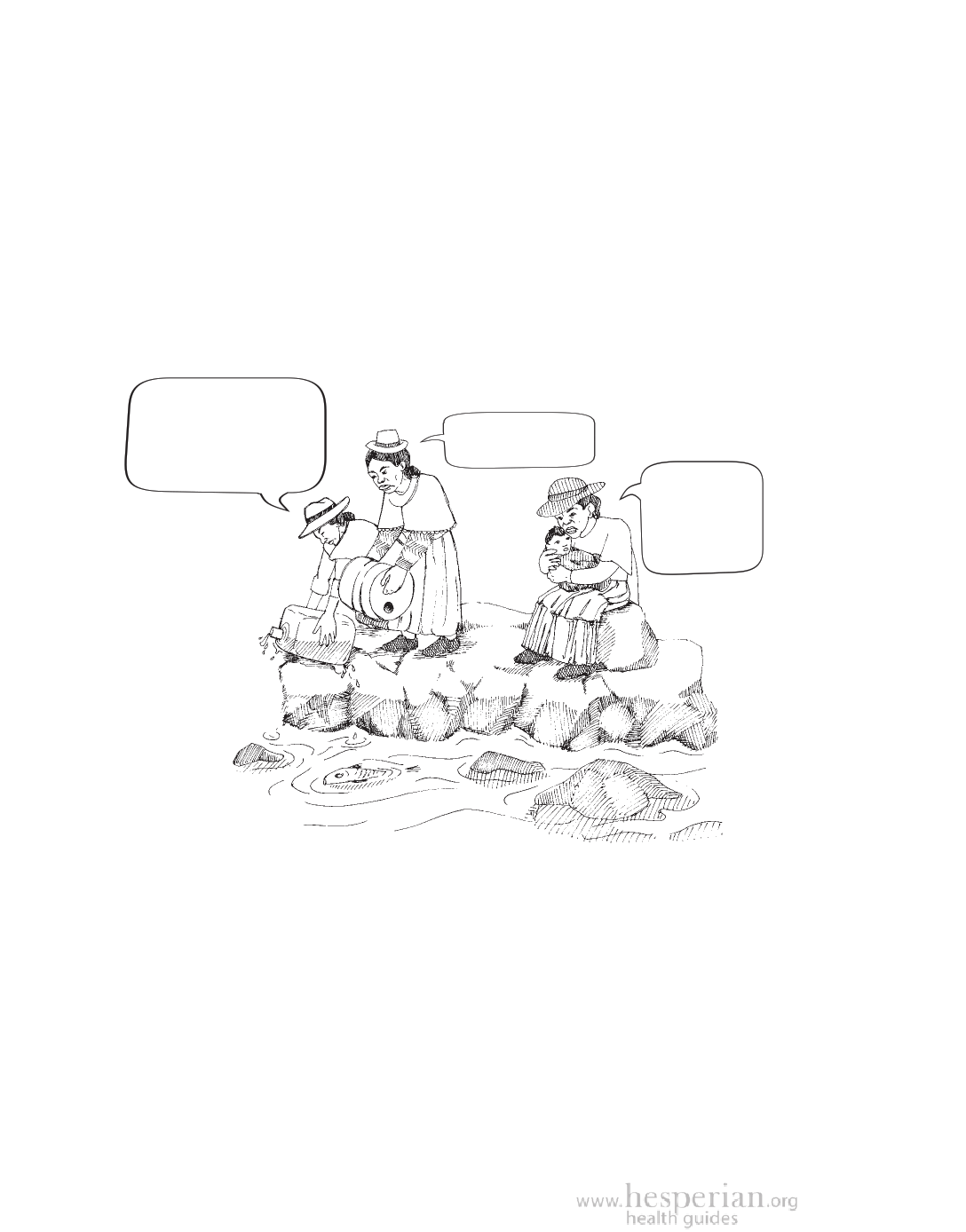
482 Mining and Health
Contaminated Water
Mining uses large amounts of water and leaves large amounts of waste,
contaminating water sources and the people who depend on them. While
all mining operations tend to pollute water, big companies usually cause
the biggest problems. Surface water and groundwater in mining areas may
remain contaminated for many years. Water loss can leave the land barren
and unusable for farming or raising animals. The long-term damage of
water contamination will last much longer than the short-term economic
gain from mining.
Since the mining
company came, the
amount of water in our
river has dropped to
almost nothing!
The water tastes
terrible now.
I don’t want
to touch that
water, but
how else can
I wash?
Preventing and reducing water pollution
Leaking waste ponds are one of the main causes of water pollution from mining.
To prevent pollution, waste ponds should be:
• built away from water sources or watershed drainage areas.
• lined to prevent leaks into groundwater.
• built according to the best international standards.
• monitored to prevent leaks and spills.
• emptied of wastes and safely closed when mining operations end.
Cleaning water once it has been polluted by mining is difficult, costly, and not
always successful.
A Community Guide to Environmental Health 2012